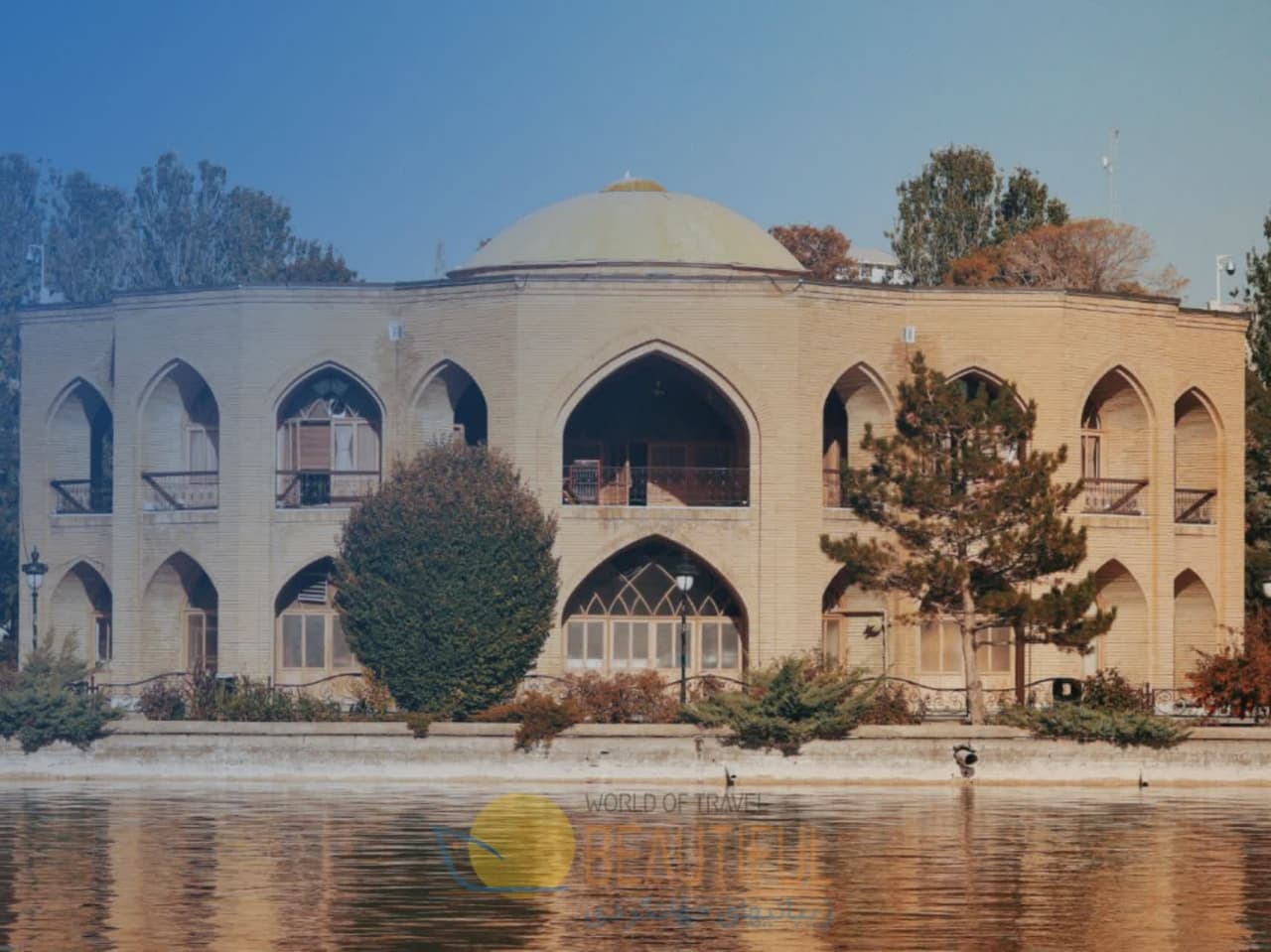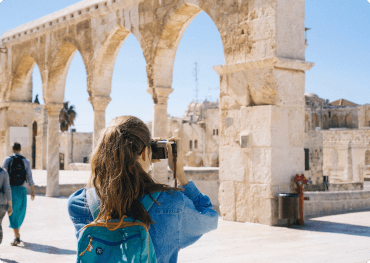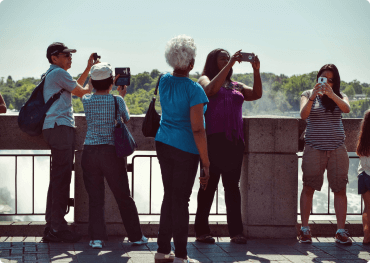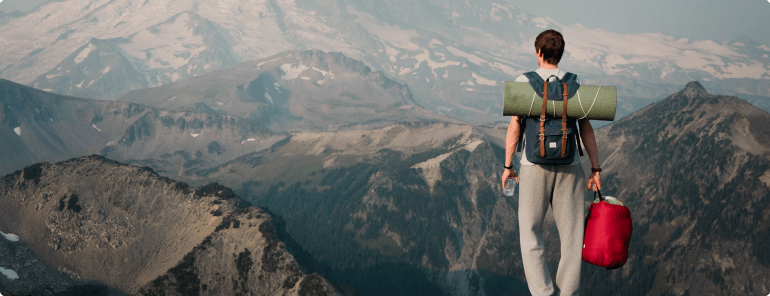
CL-502
Package Details
Day 1: Flight from your home country to Tabriz
Preparing ourselves for a fabulous trip to Great Persia.
Flight from Istanbul late evening with Turkish Airlines to Tabriz
Arrival to Tabriz early morning next day, after customer formality, meet and assist at airport and transfer to the Hotel , check in for rest.
Day 2: Kandovan
0830 AM breakfast in hotel, then travel to Kandavan is village far from Tabriz around 62KM, this village is in Sahand Rural District, in the Central District of Osku County, East Azerbaijan Province, Iran. This village exemplifies manmade cliff dwellings which are still inhabited. The troglodyte homes, excavated inside volcanic rocks and tuffs similar to dwellings in the Turkish region of Cappadocia, are locally called "Karaan". Karaans were cut into the Lahars (volcanic mudflow or debris flow) of Mount Sahand. The cone form of the houses is the result of lahar flow consisting of porous round and angular pumice together with other volcanic particles that were positioned in a grey acidic matrix. After the eruption of Sahand these materials were naturally moved and formed the rocks of Kandovan. Around the village the thickness of this formation exceeds 100 m and with time due to water erosion the cone shaped cliffs were formed. At the 2006 census, the village population was 601, in 168 families this village also famous for mineral spring water useful for urinary stones, every day 100 s of peoples going to drink it and take in bulk for their use.
Lunch in local restaurant in Kandavan and return to Tabriz in afternoon and evening in free
Day 3: Tabriz
Today after breakfast in hotel (use to eat BAL GHYMAGH), walking in Shahgoli and then we go to visit Blue Mosque and Museum, then visit to Grand bazaar and House of constitutional of Tabriz
Lunch in traditional restaurant and continue to discover Grand Bazaar
Return to the hotel late afternoon and evening in free
O/N Tabriz
Tabriz is the most populated city in the Iranian Azerbaijan, one of the historical capitals of Iran, and the present capital of East Azerbaijan Province. Located in the Quru River valley between the long ridge of the volcanic cones of the Sahand and Eynali mountains, Tabriz' elevation range between 1,350 and 1,600 meters above sea level. The valley opens up into a plain that gently slopes down to the eastern shores of Lake Urmia, 60 kilometres (37 miles) to the west. With cold winters and temperate summers, the city is considered a summer resort.
Tabriz has a population of 1,549,453. The population consists mostly of Iranian Azerbaijanis who speak the Azerbaijani language. It is a major heavy industry hub for automobile, machine tools, refineries and petrochemical, textile, and cement production industries. The city is famous for its handicrafts including hand-woven rugs and jewelry. It is known for locally made confectioneries, chocolates, dried nuts, and traditional food. Tabriz is also an academic hub and a site for some of the most prestigious academic and cultural institutes in the northwest of Iran.
The city has a long and turbulent history with its oldest civilization sites dated back to 1,500 BC. It contains many historical monuments representing the transition of Iranian architecture in its long historical timelines. Most of the preserved historical sites in the city belong to Ilkhanid (of Mongol Empire), Safavid, and Qajar area, among them is the grand Bazaar of Tabriz which is inscribed as a World Heritage Site in 2010.
From the early modern era, the city was pivotal in the development, movement, and economy of three neighboring regions, namely that of the Caucasus, Eastern Anatolia, and central Iran. From the 19th century, it became the most important city in the country in numerous respects. As the closest Iranian hub to Europe, many aspects of the early modern modernisation in Iran started in Tabriz. Prior to the forced ceding of Iran's Caucasian territories to Imperial Russia following the two Russo-Persian Wars of the first half of the 19th century, Tabriz was the main city in the implementation of Iranian rule for its Caucasian territories due to its proximity. During almost the entire Qajar period (up to 1925), it functioned as the seat for the crown prince as well.
Elgoli or Shahgly one of the main promenade, the city of Tabriz in the South East and is located 7 km from the city center. This took place Qqvyvnlvha created during the Safavids expanded. Shahgly lake depth of 12 meters and the area where sailing is done. The amusement park (Lunapark) and also inside the park there are several motels. With the construction of Pars Hotel Elgoli, this resort has a global aspect.
Rvykaramdn Shahgly before the Safavids, the largest source of water supply for watering gardens and areas east of Tabriz to Tehran after Tplybagh was. In the reign of the Safavids, all the sand and contaminate the inner courtyard was empty and the stone walls around its current lake was drawn. During the Qajar Shahgly streets for pedestrians was built around the pool and in near the road, trees, poplar, willow and flowers of petunia in a number of rows were planted to decorate the walkway and purity of water and air. Shahgly in the side of the Municipality of Tabriz was assigned to be converted into a public park. Seyyed Baqer Kazmy (Mhzbaldvlh) then Governor of Eastern Azerbaijan, the first major overhaul in the area and walkway to accomplish this. At the center of Shah Goli Pool, Klahfrhngy octagonal mansion that is now used as a banquet hall and palace King's famous goal. The building was previously adobe building that was demolished in 1346 and the efforts of the Municipality of Tabriz and the governor, gave way to a beautiful building and strengthening.
The Blue Mosque is a famous historic mosque in Tabrīz, Iran. The mosque and some other public buildings were constructed in 1465 upon the order of Jahan Shah, the ruler of Kara Koyunlu.The mosque was severely damaged in an earthquake in 1779, leaving only the iwan (entrance hall). Reconstruction began in 1973 by the late Reza Memaran Benam under the supervision of Iranian Ministry of Culture. However, the tiling is still incomplete.
The Blue mosque of Tabriz was built upon the order of Jahan Shah the ruler of Kara Koyunlu dynasty which made Tabriz the capital of his Kingdom. His Kingdom covered major parts of modern Iran, Azerbaijan, and Turkey. He was killed by Uzun Hassan (the ruler of Ak Koyunlu) and buried on the only parts of the mosque that survived.
The mausoleum was built in the southern section of the mosque and is entirely covered with high marble slabs on which verses from Quran are engraved in Thuluth script on a background of fine arabesques. The roof of the mausoleum and the main dome chamber of the mosque collapsed during an earthquake in 1779 A.D. and was rebuilt in 1973 thanks to the efforts of Mohammad Reza Memaran Benam (a famous architect from Tabriz) under the supervision of the national organization for preservation of ancient monuments.
Bazaar of Tabriz: Tabriz has been a place of cultural exchange since antiquity. Its historic bazaar complex is one of the most important commercial centres on the Silk Road. Located in the center of the city of Tabriz, Iran, the structure consists of several sub-bazaars, such as Amir Bazaar (for gold and jewelry), Mozzafarieh (a carpet bazaar, sorted by knot size and type), shoe bazaar, and many other ones for various goods such as household items. The most prosperous time of Tabriz and its bazaar was in the 16th century when the town became the capital city of the Safavid kingdom. The city lost its status as a capital in the 17th century, but its bazaar has remained important as a commercial and economic center. Although numerous modern shops and malls have been established nowadays, Tabriz Bazaar has remained the economic heart of both the city and northwestern Iran.
Tabriz Bazaar has also been a place of political significance, and one can point out its importance in the Iranian Constitutional Revolution in the last century and Islamic Revolution in the contemporary time.The bazaar was inscribed as a World Heritage Site by UNESCO in July 2010.
Museum (Home Constitutional): The Constitution House of Tabriz, also known as Khaneh Mashrouteh, is a historical edifice located next to the Great Bazaar of Tabriz, on Motahari Ave in Tabriz, Iran. During the years which led to Constitutional Revolution and afterwards the house was used as a gathering place of the leaders, activists and sympathizers of the movement. Among them, the most famous people were Sattar khan, Bagher Khan, Seqat-ol-Eslam Tabrizi and Haji Mirza Aqa Farshi and the founder Haji Mehdi Kuzeh kanaani, himself a revolutionary activist and a well-reputed person of the time; who was named Abolmele, i.e. the father of the nation at the time. . The two-story building was constructed in 1868 by Haj Vali Me'mar-e Tabrizi. It has numerous rooms and halls. The most beautiful part of the house is a skylight and corridor decorated with colorful glass and mirrors.
Day 4: Tabriz – Sar Ein (Ardabil)
After breakfast, drive to Sar Ein (200 km).
O/N: Sar Ein
Sar Ein a small town 30 kilometers west of Ardabil.
Sareyn is a city in and the capital of Sareyn County, in Ardabil Province, Iran. Sareyn is known for its hot springs. The population is about 8000, and increases to more than 20000 in the summer because of the many tourists who go there due to the charming climate. It stands 28 km from Ardabil and total area is 1.28 square km2. At the 2006 census, its population was 4,478, in 1,135 families. The Sareyn springs are near an inactive volcano in mount Sabalan and its water contains sulphur particles and it is believed that it is good for bone and joint pains.The word Sareyn in the Persian dictionary means "spring’s Outlet".
The climate and hot springs are the first attractions to tourists who travel to this region from different parts of Iran and the world.Sareyn is also famous for its 'Ashe Doogh' (Yogurt Soups), during the busy summer periods, it is not uncommon for many of the local shops to be seen selling and preparing this soup.
Hot springs (spa) have always been in Sarein but the 1990s earthquake caused some of them to get colder or hotter. The water is heated largely by the Sabalan Mountain which is Iran's second highest mountain after Damavand.
Many tourists visit Sabalan. Its most interesting feat is the 'crater' top which contains a lake of acidic water.
Sarein is also very famous for its honey, again like the soup, many of Sarein's shops sell honey which is produced locally by the Bee keepers of the area.
The main language of Sarein is the Azeri dialect, however Persian is understood.
There are 9 hot springs in Sarein, with 'Gavmesh Goli' being the hottest, with water reaching 67 degrees, and turning out around 80 liters per second from the source. There is also several cold water springs nearby, with the most popular being situated in a small village nearby called 'Vila Dareh' - the water here is fizzy and is very good for the kidneys.
The climate is by far a great asset, and many Iranians from Tehran and other big cities escape to the tranquility and good weather that Sarein has to offer.
Sareyn Springs:
· Qarah Soo (A'saab) Thermal Spring - Relieving
· Sari Soo Thermal Spring - Relieving
· Gavmish Goli Thermal Spring - Relieving and good for Rheumatism
· General Thermal Spring - Good for Joint Pains
· Besh Bajilar Thermal Spring - Good for Joint Pains
· Qahveh Suei Thermal Spring - Good for Joint Pains
· Pehenlu Thermal Spring - Relieving
Day 5: Sareyn – Ardabil
Morning after breakfast travel to Ardabil to visit Sheykh Safi Aldin Ardabili tomb
Return to Sarein for lunch and use spring water as listed for different purpose
O/N: Sarein
Safi-ad-din Ardabili The tomb of Safi al-Din in Ardabil, Iran Sheikh Safi-ad-din Is’haq Ardabili (of Ardabil) (1252–1334) (was the Kurdishand Sunni. Muslim eponym of the Safavid dynasty, founder of the Safaviyya order, and the spiritual heir and son in law of the great Sufi Murshid (Grand Master) Sheikh Zahed Gilani, of Lahijan in Gilan province in northern Iran. Most of what we know about him comes from the Safvat as-safa, a hagiography written by one of his followers.
Lineage Safi-ad-din was of Kurdish origins. According to Minorsky, Sheykh Safi al-Din’s ancestor Firuz-shah was a rich man, lived in Gilan and then Kurdish kings gave him Ardabil and its dependencies. Minorsky refers to Sheykh Safi al-Din’s claims tracing back his origins to Ali ibn Abu Talib, but expresses uncertainty about this. The male lineage of the Safavid family given by the oldest manuscript of the Safwat as-Safa is:"(Shaykh) Safi al-Din Abul-Fatah Ishaaq the son of Al-Shaykh Amin al-din Jebrail the son of al-Saaleh Qutb al-Din Abu Bakr the son of Salaah al-Din Rashid the son of Muhammad al-Hafiz al-Kalaam Allah the son of Javaad the son of Pirooz alKurdi al-Sanjani (Piruz Shah Zarin Kolah the Kurd of Sanjan)" similar to the ancestry of Sheykh Safi al-Din’s father in law, Sheikh Zahed Gilani, who also hailed from Sanjan, in Greater Khorassan. An etched figure of a giant hand, in Safi-ad-din Ardabili Mausoleum, showing Twelver Shi'a sign of Panj-tan-e Āl-e Abā 2 Ascension as Murshid Sheikh Safi al-Din inherited Sheikh Zahed Gilani's Sufi order, the "Zahediyeh", which he later transformed into his own, the "Safaviyya". Sheikh Zahed Gilani also gave his daughter Bibi Fatemeh in wedlock to his favorite disciple. Sheikh Safi al-Din, in turn, gave a daughter from a previous marriage in wedlock to Shaikh Zahed Gilani's second-born son. Over the following 170 years, the Safaviyya Order gained political and military power, finally culminating in the foundation of the Safavid dynasty. Poetry Sheikh Safi al-Din has composed poems in the Iranian dialect of old Tati. He was a seventh-generation descendant of Firuz-Shah Zarrin-Kolah, a local Iranian dignitary. Only a very few verses of Sheikh Safi al-Din’s poetry, called Dobaytis (double verses), have survived. Written in old Tati and Persian, they have linguistic importance today
Day 6: Sareyn – Rasht via Khalkhal
After breakfast in hotel, prepare to travel to Rasht capital of Gilan (280 KM)
In the way, lunch in local restaurant in Khakhal. In the evening we arrive to Rasht
Check in with hotel and time for free
O/N: Rasht
Khalkhal is the name of the center as well as an anklet city in Ardebil, Iran is. Springs of hot wateranklets in 22 km north of West Hrvabad intended for the treatment of joints and bones and nerve and skin is located. Also in the southwest Hrvabad in the village oven There are several hot springs where the temperature 30 to 50 degrees Celsius is. About 18 kilometers south Hrvabad volcanic activity Quaternary is seen. Vhmchnn in anymoreanklets and near the village of fuel in the river every year there anymore anklet spa guests of this nature benefit.
Day 7: Rasht – Fuman – Kasma - Shanderman
After breakfast in the hotel, we go to FUMAN to visit Ghaleh Roodkhan and tradional bazaar, Kasma and Shanderman
Lunch in local restaurant in the way. Evening return to Rasht
O/N: Rasht
Fuman is a city in and the capital of Fuman County, Gilan Province, Iran. At the 2006 census, its population was 27,763, in 7,728 families.
Rice has been cultivated in this region for many years, where some indigenous cultivars (landrace) were conventionally bred by farmers.
Fuman also produces Persian cookies called Koloocheh. The Fuman Koloocheh is thinner and larger than its famous brethren, the Lahijan Koloocheh. While not as well publicized and mass-produced as the Koloocheh from Lahijan, Fuman's Koloocheh is quite popular and tasty. To learn more about Koloocheh see Koloocheh and Masgati
Kasma Rural District: In the Central District of Sowme'eh Sara County, Gilan Province, Iran. At the 2006 census, its population was 16,062, in 4,557 families. The rural district has 36 villages.
Shanderman one of the parts of the city Masal in Gilan Province in northern Iran has one of the most important points of the city issued the largest village of Gilan Siah Mard is the village which has four thousand people.
Rudkhan Castle is a brick and stone medieval castle in Iran.
Located 25 km southwest of Fooman city north of Iran in Gilan province, it is a military complex which had been constructed during the Sasanian era (224-651), and later rebuilt during the Seljuq era by followers of the Ismā'īlī sect. The castle is built on two tips of a mount, with an area of 2.6 hectares (6.4 acres). Its architects have benefited from natural mountainous features in the construction of the fort.The Rudkhan Castle River originates in the surrounding heights and flows from south to north.
After crossing a mountainous winding route with dense forests, the first thing that one notices about the castle is its big entrance gate.Rudkhan Castle sits at the two peaks of a mountain at elevations of 715 and 670 metres and contains strong fortifications and battlements at a length of 1,550 metres. The castle's 42 towers still stand intact.
Day 8: Rasht - Qazvin
After breakfast in the hotel, we prepare for checkout and travel to Qazvin (200 KM)
Arrival to Qazvin and check in to the hotel. Lunch in local restaurant and rest of the day free for shopping
O/N: Qazvin
Day 9: Qazvin
Morning after breakfast in the hotel, we go to visit Jame Mosque, museum of Qazvin, Alighapoo, peighambariyeh, Grand bazaar
Lunch in local restaurant. Evening return to the hotel
O/N: Qazvin
Qazvin is the largest city and capital of the Province of Qazvin in Iran. Qazvin was an ancient capital in the Persian Empire and nowadays is known as the calligraphy capital of Iran. It is famous for its Baghlava, carpet patterns, poets, political newspaper and pahlavi (Middle Persian) influence on its accent. At the 2011 census, its population was 381,598.
Located in 150 km (93 mi) northwest of Tehran, in the Qazvin Province, it is at an altitude of about 1,800 m (5,900 ft.) above sea level. The climate is cold but dry, due to its position south of the rugged Alborz range called KTS Atabakiya.
The city was a former capital of the Persian Empire under Safavids. It is a provincial capital today that has been an important cultural center throughout history.
Archeological findings in the Qazvin plain reveal urban agricultural settlements for at least nine millennia. Qazvin geographically connects Tehran, Isfahan, and the Persian Gulf to the Caspian seacoast and Asia Minor, hence its strategic location throughout the ages.
The city today known as Qazvin is thought to have been founded by Shapur II, King of Persia in 250 CE, under the name Shad Shahpur (shad can be read as 'happy'), when he built a fortification there to control regional tensions.
Qazvin has sometimes been of central importance at major moments of Iranian history. It was captured by invading Arabs (644 AD) and destroyed by Hulagu Khan (13th century). After the Ottoman capture of Tabriz, Shah Tahmasp (1524–1576) made Qazvin the capital of the Safavid empire (founded in 1501 AD), a status that Qazvin retained for half a century until Shah Abbas I moved the capital to Isfahan.
In 1210 the city was conquered and sacked by the forces of Kingdom of Georgia sent by Tamar the Great, as per the retribution for destroying Georgian-controlled Ani by the Muslim forces that left 12,000 Christians dead.
In the 19th century Qazin flourished as a center of trade because the only all-year accessible road from the Caspian Sea to the Highland started here and with enhanced traffic on the Caspian Sea the trade volume grew. Its bazaars were enlarged. In the middle of the century the Babi movement had one of its centers here and the first massacre of Babis occurred in Qazvin in 1847.
In the second half of the 19th century Qazvin was one of the centers of Russian presence in northern Iran. A detachment of the Persian Cossack Brigade under Russian officers was stationed here. From 1893 this was the headquarters of the Russian Company for Road construction in Persia which connected Qazvin by roads to Tehran and Hamadan. The company built a hospital and the St. Nicolas Church.
In 1920 Qazvin was used as a base for the British Norperforce. The 1921 Persian coup d'état that led to the rise of the Pahlavi dynasty was launched from Qazvin. It became a state in 2001.
Jame Mosque of Qazvin is one of the oldest mosques in Iran, and is the grand, congregational mosque (Jameh Mosque) of Qazvin, in Qazvin Province, Iran.
The oldest part of the mosque is said to have been constructed by the orders of Harun al-Rashid in 807 CE. Later additions were made, the last being during the late Safavid era. The double layered main dome of the mosque is from the Seljuk era, and is locked to the public. It houses some precious examples of relief calligraphy from medieval times. Renovations have also been carried out on many sections of the mosque.
The foundation of the mosque is laid on a Zoroastrian fire temple.In spite of the devastating Mongol invasion, the mosque still stands today in its full glory. It is still in use. Parts of the mosque have been turned into a public library.The mosque also contains a Shabestan and Ab anbar, both now under the protection of Iran's Cultural Heritage Organization.Part of the mosque got on fire January 28 2013 and that resulted in the historic tomb to be completely destroyed.
Museum of Anthropology: The monument in 1379 by the Cultural Heritage and Tourism Qazvin Province purchases and by investing Qazvin Municipality and the renovation and improvement of management was refurbished and now as the Museum of Anthropology in 3 parts ethnicities, customs and jobs are interested Bazdbd place.
Ali Qapu one of the monuments and tourism in the city of Qazvin at the beginning of Sepah Street - First Street built in Iran - is located. The building entrance is one of seven at the entrance to the citadel of the royal Safavid respectively. And on South Main Street and King Square that was open and only in this collection that now has remained.
The first built during Shah Tahmasp built in the time of Shah Abbas I present form is distorted. Nasser al-Din Shah's era, repairs and additions were made in the first Pahlavi era police stay there because of the name "police" and "police" in the medallion above the entrance to the deceased Abdul Pizishkiyan, teacher Qazvini line, stucco, and additional area above the entrance at the time of the second side in the second Pahlavi era were removed. On the front of the 17 meter high entrance, an inscription with mosaic tiles to line a third of Alireza Abbasi - calligrapher famous Safavid era - is manifest.
Above the inscription, huge grille of tile is located. More than two long pair on either side of the entrance to the top Taqnmayy which is located adjacent to the buildings linking.
Qazvin market: Qazvin collection with interesting architecture and its old market, one of the landmarks of the city of Qazvin Ast.sabqh market in Qazvin to one thousand years, and over time the market reaches up to the Safavid grows and in the course by selecting Qazvin as the capital of Iran and after in the Qajar era with the construction of significant projects such as the home of Saad al- market due to the proximity of the city of Qazvin in the axis connecting the capital of the west and northern Iran on those given great value. But the current market collection of Safavid and attributed much of its current buildings during the Qajar made.
During the Safavid expanded market environment and the market have been related to a specific trade. In the course of each of these markets, mosques, baths, inns, arcade and Qysryhhay that of these, arcade and Caesarea Trade Center site were craftsmen. Qazvin housed Taqha brick immense height, Yi sections of Qazvin market, which has four gates and is still extant works. North Door Timcheh soldier, southern door Timcheh covered, Eastern door to the home minister and the Western door to a small Chahar connected.
Qazvin's most important market areas are: un-Nabi (mosque) , Saad al-Saray , the home secretary , the home of Haj Reza Razavi House (the home of the King), covered passageways including indoor and outdoor swimming Mehdi Darvish, Haj Mohammad Taqi and orders Caesarea.
Day 10 Qazvin Tehran
Morning after breakfast in the hotel, check out and travel to Tehran capital of Iran (140KM)
Arrival to Tehran and check in with hotel, Lunch in local restaurant
Afternoon travel to enjoy with Lake of Tehran a live area in western part of grand city,
Dinner in lake side and return to the hotel late evening and rest
O/N Tehran
Day 11 Tehran;
Morning after breakfast, going to visit, Golestan palace, National Museum and Grand bazaar of Tehran, you can do all kind of shopping and buy souvenir’s
Lunch in public restaurant in bazaar.
Continue to discover bazaar for carpet, gold, jewelry, cloths and all kind of productions
Afternoon return to the hotel and taking rest, preparing to check out lately
Golestan Palace is the former royal Qajar complex in Iran's capital city, Tehran.
The oldest of the historic monuments in Tehran, and of world heritage status, the Golestan Palace belongs to a group of royal buildings that were once enclosed within the mud-thatched walls of Tehran’s Historic Arg (citadel). It is a masterpiece of beautiful garden and buildings consist of collection of Iranian crafts and European presents from 18th and 19th century.
Golestan Palace Complex consists of 17 structures including palaces, museums, and halls. Almost all of this complex was built during the 200 years ruling of Qajarian kings.These palaces were used for many different occasions such as coronation and other important celebrations. It also consists of three main archives as the royal photographic archive collection 'Album khane', the royal library of manuscripts 'Ketabkhane Nosakhe khati' and the archive of documents 'Markaze asnad'.
The Marble Throne (Takht e Marmar)
Karim Khani Nook (Khalvat e Karim Khani)
Pond House (Howz Khaneh)
Picture House/Gallery (Negar Khaneh)
Brilliant Hall (Talar e Brelian)
Museum of Gifts
Containers Hall (Talar e Zoroof)
Ivory Hall (Talar e Adj)
Mirror Hall (Talar e Aineh)
Salam Hall (Talar e Salam)
Edifice of the Sun (Shams ol Emareh)
The Building of Windcatchers (Emarat e Badgir)
Diamond Hall (Talar e Almas)
Abyaz Palace
The Photographic Archive
National Museum's collection of treasures and prehistoric monuments in Iran, in Tehran is located. The museum consists of two separate buildings named Museum of Iran in 1316 with the opening date and the Museum of Islamic era with the opening date is 1375.
National Museum of Iran on the country's most important museum storage, display and research collections of archaeological Iran. The extent and variety of objects in the museum collection to span multiple geographical and periods of pre-history, Islamic history and that man lived in these lands and their works put in place. Now the National Museum presented the exhibition that expresses the richness of culture, art, economic growth and technological achievements Iranians.
National Museum of Iran dating back some 60 years, not only the largest museum of archeology and history is. The museum's curatorial culture as a museum is the mother. Now Kandeh doctor Gabriel is now general manager of the museum.
The Grand Bazaar is an old historical market in Tehran, the capital of Iran.
Located at the Arg Square in Southern Tehran, it is split into several corridors over 10 km in length, each specializing in different types of goods, and has several entrances, with the main being the entrance of Sabze Meydan.
In addition to shops, the Grand Bazaar of Tehran has contained banks, mosques and guest houses.
The bazar has access to Tehran Metro through Khayam Metro Station.
While the current bazaar is most associated with the 19th century onwards, its roots go back much further.
The area around Tehran has been settled since at least 6,000 BCE, and while bazaar-like construction in Iran as a whole has been dated as far back as 4,000 BCE, Tehran's bazaar is not this old. It is hard to say exactly when the "bazaar" first appeared, but in the centuries following the introduction of Islam, travellers reported the growth of commerce in the area now occupied by the current bazaar. The Grand bazaar is a continuation of this legacy.
Research indicates that a portion of today's bazaar predated the growth of the village of Tehran under the Safavids' dynasty, although it was during and after this period that the bazaar began to grow gradually.
Western travellers indicated that by 1660 CE and beyond, the bazaar area was still largely open, and only partially covered.
Day 12; departure from Tehran to your home
We hope you will have a good experience with Iran and it was memorable trip
See you soon
Details
Pellentesque accumsan magna in augue sagittis, non fringilla eros molestie. Sed feugiat mi nec ex vehicula, nec vestibulum orci semper. Class aptent taciti sociosqu ad litora torquent per conubia nostra, per inceptos himenaeos. Donec tristique commodo fringilla. Duis aliquet varius mauris eget rutrum. Nullam sit amet justo consequat, bibendum orci in, convallis enim. Proin convallis neque viverra finibus cursus. Mauris lacinia lacinia erat in finibus.
Pellentesque accumsan magna in augue sagittis, non fringilla eros molestie. Sed feugiat mi nec ex vehicula, nec vestibulum orci semper. Class aptent taciti sociosqu ad litora torquent per conubia nostra, per inceptos himenaeos. Donec tristique commodo fringilla.
- Specilaized Bilingual Guide
- Private Transport
- Entrance Fees
- Box Lunch,Water,Dinner and Snacks
Pellentesque accumsan magna in augue sagittis, non fringilla eros molestie. Sed feugiat mi nec ex vehicula, nec vestibulum orci semper. Class aptent taciti sociosqu ad litora torquent per conubia nostra, per inceptos himenaeos. Donec tristique commodo fringilla.
- Specilaized Bilingual Guide
- Private Transport
- Entrance Fees
- Box Lunch,Water,Dinner and Snacks
Pellentesque accumsan magna in augue sagittis, non fringilla eros molestie. Sed feugiat mi nec ex vehicula, nec vestibulum orci semper. Class aptent taciti sociosqu ad litora torquent per conubia nostra, per inceptos himenaeos. Donec tristique commodo fringilla.
- Specilaized Bilingual Guide
- Private Transport
- Entrance Fees
- Box Lunch,Water,Dinner and Snacks
Pellentesque accumsan magna in augue sagittis, non fringilla eros molestie. Sed feugiat mi nec ex vehicula, nec vestibulum orci semper. Class aptent taciti sociosqu ad litora torquent per conubia nostra, per inceptos himenaeos. Donec tristique commodo fringilla.
- Specilaized Bilingual Guide
- Private Transport
- Entrance Fees
- Box Lunch,Water,Dinner and Snacks
Pellentesque accumsan magna in augue sagittis, non fringilla eros molestie. Sed feugiat mi nec ex vehicula, nec vestibulum orci semper. Class aptent taciti sociosqu ad litora torquent per conubia nostra, per inceptos himenaeos. Donec tristique commodo fringilla.
- Specilaized Bilingual Guide
- Private Transport
- Entrance Fees
- Box Lunch,Water,Dinner and Snacks






















